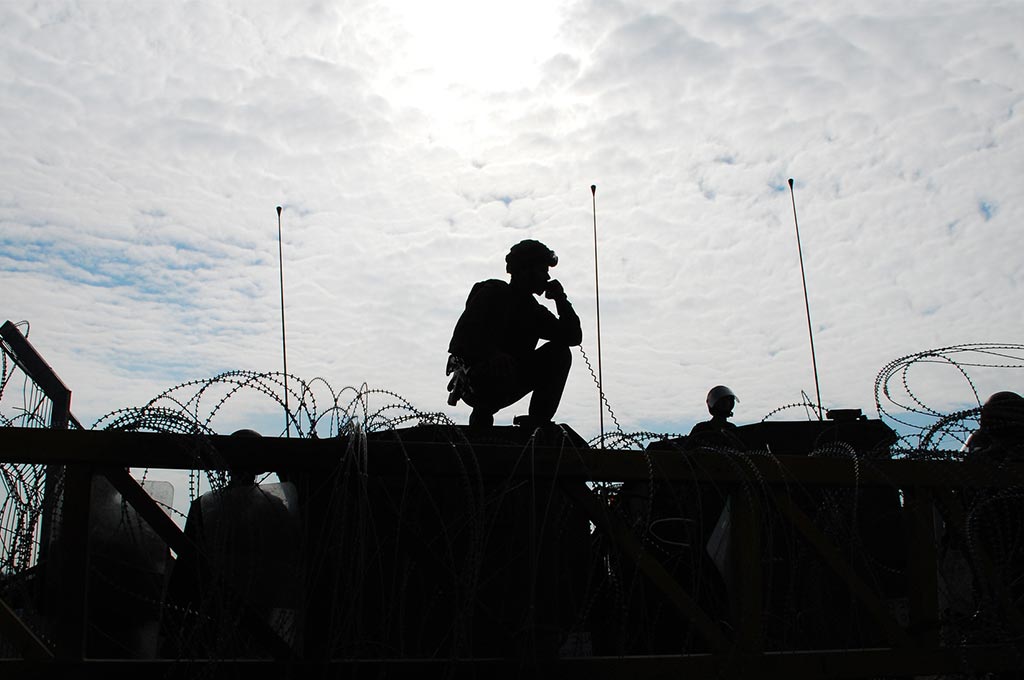
IESE Insight
10 world trends from The Economist’s Tom Standage
From artificial intelligence to the Middle East, 2024 promises changes and challenges.
War in the Middle East, stalemate in Ukraine and a new cold war: The forecast for 2024 doesn’t look too sunny, at least from the perspective of Tom Standage, deputy editor of The Economist.
Uncertainty ahead: 10 trends that will impact 2025
Like every year, the magazine has launched The World Ahead, its overview of key trends going forward. And Standage came to IESE’s Madrid campus in person to discuss them at a session with Professor Juan Jose Toribio.
Drawing from journalists, The Economist Intelligence Unit, and editors in politics, business, science and the arts, Standage talks us through 10 emerging stories that we can expect to be crucial in 2024.
1. Democracy run amok
In 2024, 4.2 billion people — more than half the global population — will vote in elections. But, Standage asserts, “there’s more to democracy than voting.” From elections that are foregone conclusions, such as Putin’s reelection in Russia, to wobbly democracies like India, where press freedom is limited, many voters don’t have much chance to change those in charge.
2. A local election with international ramifications
Of all the elections in 2024, most eyes will be turned to see who becomes president of the United States in November. Can Biden cling on? Will Trump return? The U.S. is itself designated as a somewhat rickety democracy, according to the EIU Democracy Index, and the outcome is likely to be decided by mere tens of thousands of voters in a few swing states. To some extent, Vladimir Putin’s future will be decided in U.S. elections, rather than in Russia.
3. Europe and the fate of Ukraine
The 2023 counteroffensive didn’t go as well as hoped, the conflict has become a war of attrition, and a change of government in the U.S. could mean an end to American support. It’s time for Europe to step up, asserts Standage. That means industrial mobilization — learning how to make many things again, including weapons — and providing financial support to Ukraine.
4. The Middle East on the brink of wider violence
The world can no longer ignore the plight of Palestinians. Beyond that, two big questions remain: What happens after the Israeli offensive comes to an end? And are the Abraham Accords, which attempted to normalize relations between Israel and various Arab powers, permanently on ice? Although an estimated 1,200 Israelis and around 25,000 Palestinians are dead (as of January 2024) and the conflict has already spread to the Red Sea and beyond, there may be a small ray of hope in renewed calls for a two-state solution.
5. Multipolar disorder
Though most eyes are on the Middle East and Ukraine, the disorder is global. This is yet another sign that the unipolar world order is over. The United States is no longer the only big kid on the block; in fact, the U.S. is looking increasingly distracted. Russia is also overstretched. Smaller powers are taking this as a green light to make a move — Venezuela, for example, and its threat to annex the Essequibo region of neighboring Guyana. For the past 30 years, much of the world has been having a “holiday from history.” We now need to prepare for an era of more conflict, not less.
6. Cold weather ahead
A key potential geopolitical conflict is China’s intentions toward Taiwan. With the U.S. overstretched while also trying to limit China’s access to Taiwan-made chips, will China make a move soon? Rhetoric is ramping up on both sides. We’re entering a new cold war but with a difference: trade continues. Companies trying to reduce their supply chains’ dependence on China will find it difficult, since even factories located in third countries, like Vietnam or India, still rely on Chinese-made parts.
7. Middle economies transformed by green energy
The attempt to transition away from fossil fuels is redrawing the energy map and giving new prominence to countries that can supply lithium, nickel, cobalt and copper. These new hotspots include Australia, Chile, Indonesia, New Caledonia and Zimbabwe.
8. Economic pain is still on the agenda
Although the predicted recessions in the U.S., EU and U.K. were largely avoided in 2023, it would be a mistake to say the road to recovery is clear. Interest rates have remained high for longer than expected, which is painful for both companies and consumers. In the U.S., a commercial property crisis may be unfolding in slow motion, which could have major repercussions on small and medium-sized banks. China, meanwhile, will have to navigate deflation.
9. AI will be widely deployed
Without a doubt, one of the most-discussed phenomena of 2023 was the arrival of generative AI. But many companies spent the year testing how to integrate it into their products. Now, 2024 is likely to be the year when those products are widely deployed, and there will be both successes and (perhaps spectacular) failures. As a consequence, regulators will be stepping in. Standage also insists that we need to move on from the “killer robot” debate to discuss the more realistic risks of AI: unreliability, discrimination and bias.
10. Moments of joy?
Frankly, it’s not looking good. That being said, the Paris Summer Olympics may offer some respite from the doom and gloom. The planned U.S. space mission had the potential to be inspiring, sending a diverse group out of low Earth orbit for the first time, but it has now been pushed back to 2025. Will it be making Trump look good? Regardless of who is in the White House, a space mission now will be a reminder of the Space Race of the previous Cold War, with the U.S. looking for a stage to show off its technological superiority.
READ ALSO
What were the trends for 2023? Learn more on There is no new normal in 2023
